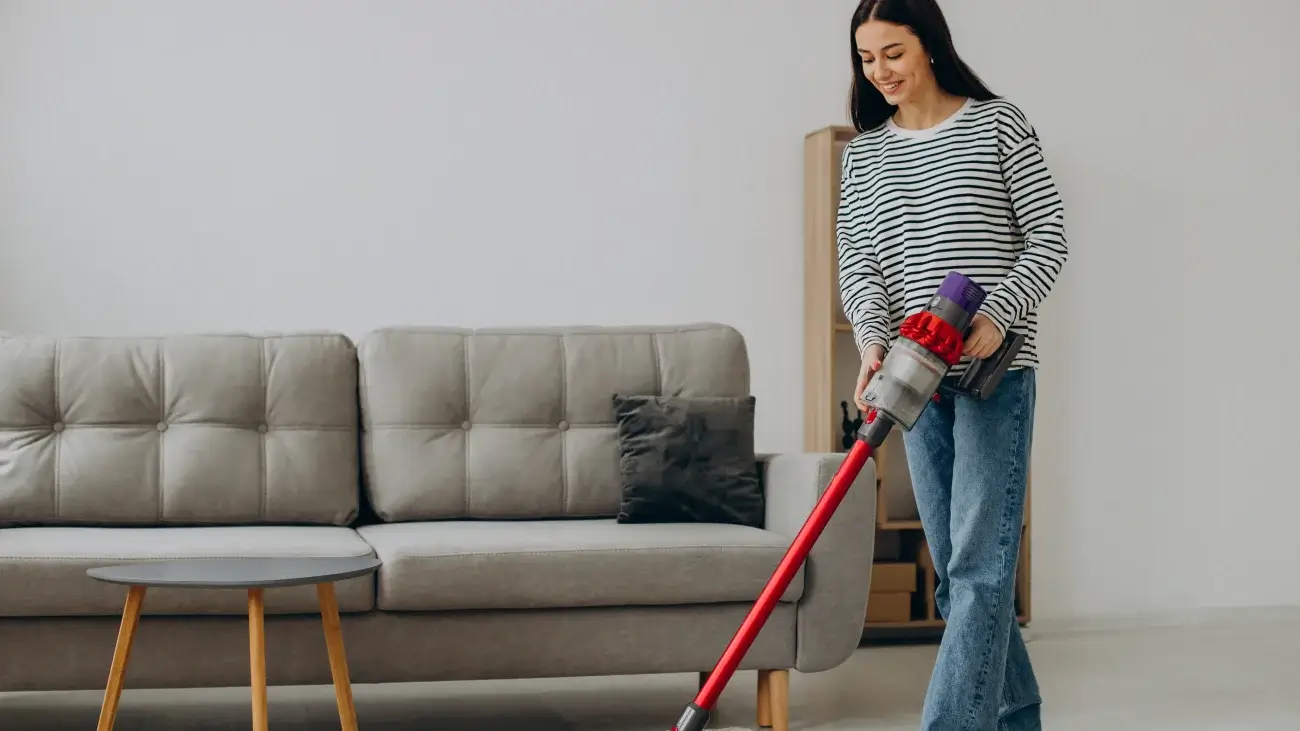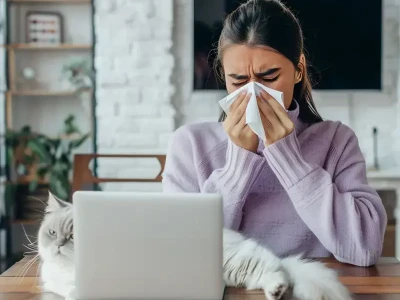Dust Allergy Causes, Symptoms, and Relief
The dust has settled

* You have to avoid the allergy trigger like Dust
If you suffer from dust allergies, you already know about the sneezing, runny nose, and watery eyes that impact your everyday life. The primary cause of indoor dust allergies is the presence of dust mites. These nasty little buggers feed off of the everyday dust found in most homes.1
Dust mites are tiny organisms that can barely be seen by the naked eye. A dust mite allergy can even trigger asthma and eczema.1*
In this page you will find information about
What is dust made of?
This may fall into the category of questions you don’t want to know the answer to, as sure as the sun rises, houses collect dust: house dust is a mix of sloughed-off skin cells, hair, clothing fibers, bacteria, dust mites, bits of dead bugs, soil particles, pollen, and microscopic specks of plastic.2
Dust gets resuspended when it’s disturbed and will recirculate throughout the house, picking up substances before returning once more to the floor. Other environmental contaminants can be tracked indoors on the soles of our shoes).2
Where does it come from?
The short answer is that dust comes from both inside and outside your house.3
We are an important part of the process of getting the outdoor stuff indoors. We bring it with us when we enter a house — through "soil particles that come in on your shoes or tiny particles suspended in the air when we open the door and walk in.3
Then there's the indoor component of dust. "Like pieces of your carpet fiber or your furniture, your bedding, or anything like that that starts decaying.3
Then there are organic contributors. "Skin flakes and the dander off your pets, and other insects or bugs that might be in the home. Now, as anyone who's looked under a sofa knows, there's dense dust and there's fluffy dust.3
What you can do about it
Don’t worry, it’s not all doom and gloom. There are lots of easy, everyday things you can do to greatly reduce the amount of dust in your home. Some easy ways to do this include:4
Control your contact with indoor airborne allergens
Ventilate your indoor areas well
Use air cleaners to clean indoor air
If your allergies are flaring up, or you are particularly sensitive to dust, consider wearing a mask while doing your household cleaning.4
Also keep in mind that Vacuuming helps keep allergens low. But poor quality vacuums could put dust into the air.4
Your furry friends
All cats and dogs — even hairless ones — contain allergens.
That’s because the source of pet allergies isn’t actually in the fur, but in a protein found in a pet’s saliva or urine.5
Pet saliva can stick to carpets, bedding, furniture and clothing. Dried saliva can become airborne.5
So-called hypoallergenic cats and dogs may shed less fur than shedding types, but no breed is truly hypoallergenic.5
If you already have a pet, or are looking to make your home a safer place for an allergy sufferer, here are three easy things you can do to greatly reduce pet allergy symptoms:6
- Create an "allergy free" zone in your home—preferably the allergic person's bedroom—and strictly prohibit the pet's access to it. Use a high-efficiency HEPA air cleaner, and consider using impermeable covers for the mattress and pillows.6
- Use HEPA air cleaners throughout the rest of the home, and avoid dust-and- dander-catching furnishings such as cloth curtains and blinds and carpeted floors. Clean frequently and thoroughly to remove dust and dander, washing articles such as couch covers and pillows, curtains, and pet beds.6
- Bathe your pet on a weekly basis to reduce the level of allergy-causing dander (shed old skin cells). Cats can get used to being bathed, but it's critical to only use products labeled for them; kittens may need a shampoo safe for kittens. Check with your veterinarian's staff or a good book on pet care for directions about safe bathing, It`s a good idea to use a shampoo recommended by your veterinarian or other animal care professional.6

* You have to avoid the allergy trigger like dust
Telfast® is here to help fight dust allergies symptoms,
in addition to suitable avoidance of dust.7
Telfast® is on your side, whether you're inside or out.
If you experience sneezing, runny nose, itchy or watery eyes or an itchy nose and throat, nasal congestion, or swelling of nasal passages, Telfast Decongestant can help.8
With a comprehensive range of products, you’re sure to find the one that works good for your indoor allergy symptoms.
Recommended Reading:
*Telfast is not indicated to relieve asthma or eczema symptoms.
Not used in children less than 2 years.
Telfast is indicated to relieve sneezing, runny nose, itchy, watery eyes or an itchy nose or throat.7
Telfast Decongestant® is indicated to relieve sneezing, runny nose, itchy, watery eyes, itchy nose or throat, nasal congestion, and swelling of nasal passages.⁸
†Among Over the Counter (OTC) oral antihistamines.
1. American College of Allergy, Asthma, and Immunology, Dust Allergies , Available at (https://acaai.org/allergies/types/dust-allergy), last accessed 13/4/2022.
2. Chemical & Engineering News, Tracing the chemistry of household dust . Available at: (https://cen.acs.org/articles/95/i7/Tracing-chemistry-household-dust.html#:~:text=More%20than%20just%20dirt%2C%20house,dust%20is%20far%20from%20inert.), Last accessed:13/4/2022
3. National Public Radio, The Dirt On Dust, Available at: (https://www.npr.org/templates/story/story.php?storyId=120252957), Last accessed:13/4/2022.
4. Asthma and Allergy Foundation of America, control indoor allergy. (https://www.aafa.org/control-indoor-allergens/), Last accessed:13/4/2022
5. Mayo Clinic, Pet Allergy. Available at: (https://www.mayoclinic.org/diseases-conditions/pet-allergy/expert-answers/hypoallergenic-dog-breeds/faq-20058425), Last accessed 13/4/2022.
6. The Humane Society of the United States, How to live with allergies and pets. Avaialble at: (https://www.humanesociety.org/resources/how-live-allergies-and-pets), Last accessed: 13/4/2022.
7. Ministry of Health, Telfast approved leaflet, approval date 29/11/2018.
8. Ministry of Health, Telfast Decongestant approved leaflet, approval date 9/6/2019.
Approved by Egyptian Drug Authority: HF0253OA3948/072025. Invalidation date: 28/07/2027. Kindly report any violated online promotional, educational and awareness material not having this message to The General administration for Regulation of Marketing & Advertising Materials at: www.edaegypt.gov.eg

HF0253OA3948/072025
28/07/2027











